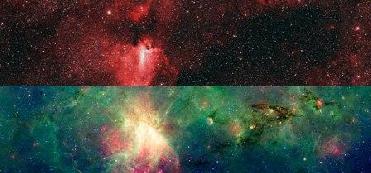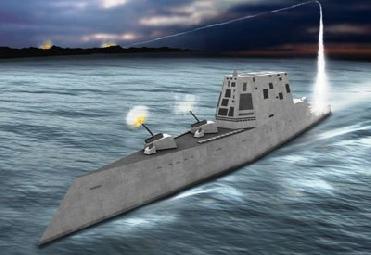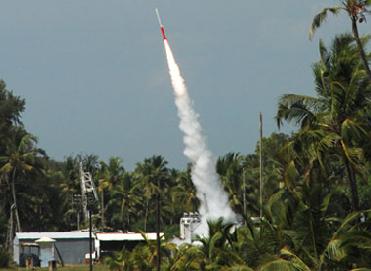
A dragon-shaped cloud of dust seems to fly out from a bright explosion in this infrared light image (bottom) from NASA's Spitzer Space Telescope, a creature that is entirely cloaked in shadow when viewed in visible part of the spectrum (top). NASA/JPL-Caltech/Penn State/DSS photo.
PASADENA, CALIFORNIA (BNS): A new image from NASA's Spitzer Space Telescope has revealed a dragon-shaped cloud of dust that seems to fly with the stars. In visible light, the creature disappears into the clouds.
The infrared image has revealed that this creature, a dark cloud called M17 SWex, is forming stars at a furious rate but has not yet spawned the most massive type of stars, known as O stars.
Such stellar behemoths, however, light up the M17 nebula at the image's center and have also blown a huge "bubble" in the gas and dust that forms M17's luminous left edge.
The stars and gas in this region are now passing though the Sagittarius spiral arm of the Milky Way, touching off a galactic "domino effect."
The youngest episode of star formation is playing out inside the dusty dragon as it enters the spiral arm. Over time, this area will flare up like the bright M17 nebula, glowing in the light of young massive stars. An older burst of star formation blew the bubble seen in the region to the far left, called M17 EB.
The visible-light view of the area clearly shows the bright M17 nebula, as well as the glowing hot gas filling the "bubble" to its left.
However the M17 SWex "dragon" is hidden within dust clouds that are opaque to visible light. It takes an infrared view to catch the light from these shrouded regions and reveal the earliest stages of star formation, NASA said.
 Previous Article
Previous Article Next Article
Next Article












The Indian Air Force, in its flight trials evaluation report submitted before the Defence Ministry l..
view articleAn insight into the Medium Multi-Role Combat Aircraft competition...
view articleSky enthusiasts can now spot the International Space Station (ISS) commanded by Indian-American astr..
view article